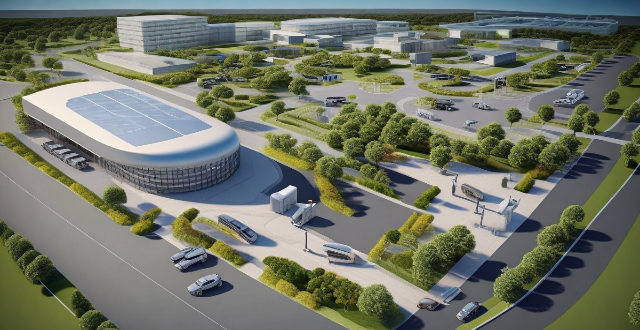Super fast charging stations rapidly charge electric vehicles (EVs) using complex technology involving multiple components. The power supply, charging equipment, and battery management system (BMS) are key elements in the process. The BMS monitors and controls the charging to ensure safety and efficiency. Challenges include potential impacts on battery health, infrastructure costs, and standardization issues across different EV models. As EV popularity increases, advancements in super fast charging technology will be vital for convenience and accessibility.

How Does a Super Fast Charging Station Work?
A super fast charging station is designed to rapidly charge electric vehicles (EVs) in the shortest amount of time possible. The technology behind these stations is complex and involves several components working together to deliver high power levels to the vehicle's battery pack. In this article, we will explore the key elements that make super fast charging stations work efficiently.
Key Components of a Super Fast Charging Station
Power Supply
The power supply is the foundation of any super fast charging station. It must be capable of delivering high levels of energy to the EV's battery pack quickly. This can be achieved through various means, such as:
- Utility Grid Connection: Connecting the charging station directly to the utility grid allows for access to a constant and reliable source of electricity.
- Renewable Energy Sources: Solar panels, wind turbines, or other renewable energy sources can supplement the power supply, reducing dependence on the grid and lowering carbon emissions.
Charging Equipment
The charging equipment includes the hardware necessary to transfer energy from the power supply to the EV's battery pack. This typically consists of:
- Charge Controller: A device that manages the flow of electricity between the power supply and the EV's battery pack, ensuring optimal charging rates and preventing damage to the battery.
- Connectors and Cables: High-quality connectors and cables are essential for safely transferring large amounts of energy without overheating or causing electrical fires.
Battery Management System (BMS)
The BMS is an integral part of the EV's battery pack, responsible for monitoring and controlling the charging process. Its functions include:
- Balancing Cells: Ensuring that each cell within the battery pack receives an equal amount of charge, preventing overcharging or undercharging.
- Temperature Management: Regulating the temperature of the battery pack during charging to prevent overheating and extend the lifespan of the battery.
Steps Involved in Super Fast Charging
Super fast charging involves several steps to ensure safe and efficient transfer of energy from the charging station to the EV's battery pack. These steps include:
1. Initial Handshake: When an EV is connected to a super fast charging station, it communicates with the station to establish compatibility and set the desired charging parameters.
2. Energy Transfer: Once compatibility is confirmed, the charging station begins transferring energy to the EV's battery pack at a high rate. The charge controller regulates the flow of electricity based on the BMS's feedback.
3. Monitoring and Control: Throughout the charging process, both the BMS and the charge controller monitor various factors, such as voltage, current, temperature, and state of charge, to ensure safe and efficient operation.
4. Completion: When the battery reaches its desired state of charge or maximum capacity, the charging process is terminated, and the EV is ready to disconnect from the charging station.
Challenges and Considerations
While super fast charging stations offer significant benefits in terms of reduced charging times, there are also challenges and considerations to keep in mind:
- Battery Health: Rapid charging can stress batteries, potentially shortening their lifespan or reducing overall capacity over time. Manufacturers must balance fast charging capabilities with long-term battery health.
- Infrastructure Costs: Building and maintaining super fast charging stations requires significant investment in high-powered equipment and infrastructure upgrades to support increased energy demands.
- Standardization: With multiple EV manufacturers offering different models with varying charging standards, achieving widespread compatibility across super fast charging networks remains a challenge.
In conclusion, super fast charging stations rely on advanced technology and careful management of various components to deliver rapid charging capabilities for EVs. As the demand for electric vehicles continues to grow, improvements in super fast charging technology will play a crucial role in making EVs more convenient and accessible for consumers worldwide.